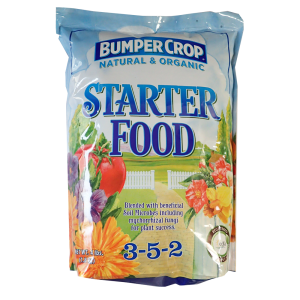Houseplants have the ability to brighten up any room, but harsh Winter conditions can cast a dark shadow on houseplant health. The effects of dry air, cold temperatures, shorter days, and lower light levels will all take their toll on even the most robust and easiest to care for plants. Our suggestion…. Know what you grow! Selecting the best houseplant for your environment, or adjusting your environment to suit your houseplant’s preferences, will go a long way in increasing the life and beauty of your potted pals.
Houseplants That Tolerate Low Light
Choosing low light houseplants is an ideal solution for any indoor area with reduced natural light and, in the northern hemisphere, low light levels are prevalent all Winter long. Either supplement natural light with the addition of grow lights, or grow houseplants that thrive in a dimly lit environment. Some of our favorites include:
- Cast Iron Plant (Aspidistra)
- Chinese Evergreen (Aglaonema)
- Dumb Cane (Dieffenbachia)
- Lucky Bamboo (Dracaena)
- Peace Lily (Spathiphyllum wallisii)
- Pothos (Epipremnum aureum)
- Prayer Plant (Calathea)
- Snake Plant (Sansevieria)
- Spider Plant (Chlorophytum)
- ZZ Plant (Zamioculcas zamiifolia)
This is just a small sampling of popular indoor plants that do well with lower light levels. Check out your local Master Nursery Garden Center for additional varieties.
Houseplants that Tolerate Low Humidity
Most houseplants originate in tropical regions. These are areas of high humidity. Home heating systems, however, rob the air of precious moisture and the longer we run our systems, the drier the air becomes. Houseplants respond with the yellowing, browning, curling and dropping of their leaves. You can increase indoor humidity by grouping houseplants together, placing them on a tray of pebbles filled with water, misting frequently, or running an air humidifier. You may also choose houseplants that originate in arid areas. These plants will be tolerant, or even happy, in a low moisture environment. Generally, plants with thick, waxy, scaly, or hairy leaves are naturally better adapted to withstand less air moisture than others. Houseplants that tolerate average and low humidity levels includes:
Low Humidity
- Cacti
- Succulents
- Snake Plant
- Wax Plant
Average Humidity
- Cast Iron Plant
- Chinese Evergreen
- Dracaena
- Peperomia
- Pothos
- ZZ Plant
Winter Houseplant Care Begins Before the Cold Sets In
Making sure that all of your houseplants enter the Winter months as healthy as possible is one of the most important steps in ensuring vigor and beauty. Getting them off to a good start will make a big difference in how they tolerate taxing indoor conditions. Winter houseplant care begins before the cold arrives with:
The Correct Pot.
Your houseplant will have grown quite a bit during the Summer months and will need to be repotted. When purchasing a new houseplant, you may desire a decorative pot to enhance its beauty. The pot will need to be the right size for the plant and its anticipated growth, without being too big or too small. Adequate drainage is also essential to prevent problems associated with plant roots sitting in water.
Premium Potting Mix.
Garden soil has too many contaminants to be good for houseplants; instead, choose Master Nursery® Bumper Crop® Potting Soil [Eastern & Midwestern Regions | Western Region]. This exceptional soil blend includes natural and organic ingredients and is perfectly balanced for both water holding capabilities and drainage to help avoid under- and over-watering your houseplants.
Proper Feeding.
Houseplants need a rest in the Winter and therefore should not be fed until growth resumes in the Spring. However, to get your houseplants through the cold season as healthy as possible, it is important to add an organic, slow-release fertilizer to the soil when repotting before the Winter sets in. The best product for this important step is either Master Nursery® Bumper Crop® Starter Food or Master Nursery® Bumper Crop® All Purpose Food. Mix the recommended amount into your potting mix at transplant time for a gradual release of nutrients for houseplant Winter health.
Winter Houseplant Care Success
You selected the correct plant, container, soil, fertilizer and have taken measures to control insects. Success is in sight! Continue to monitor the health of your houseplants throughout the Winter season. Adjust watering, humidity, and light as necessary by checking your plant pals frequently. Make certain that your plants are not situated near a heating vent, will not be blasted with cold air when a door is opened, and do not lean against a cold windowpane.
Have additional questions regarding houseplants? Your local Master Nursery Garden Center is happy to help.
Need more gardening inspiration? Click here.







